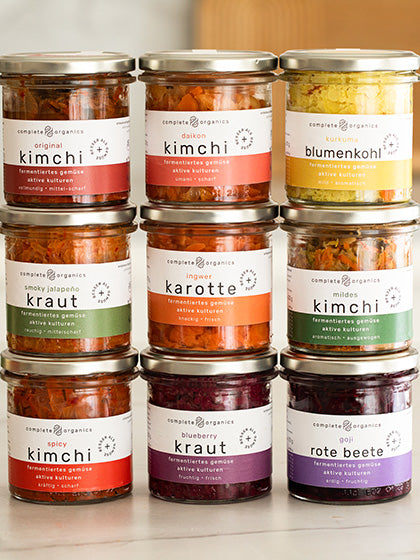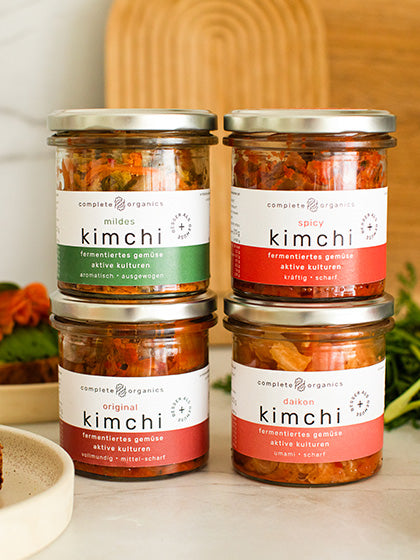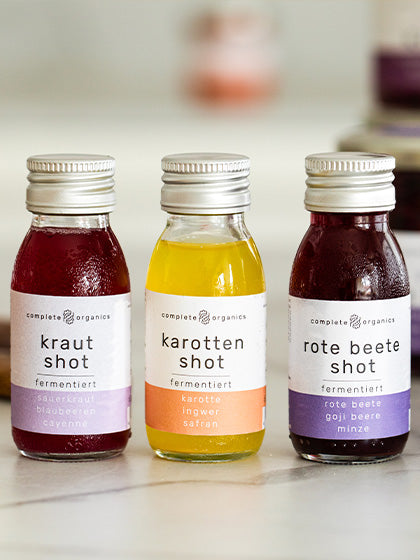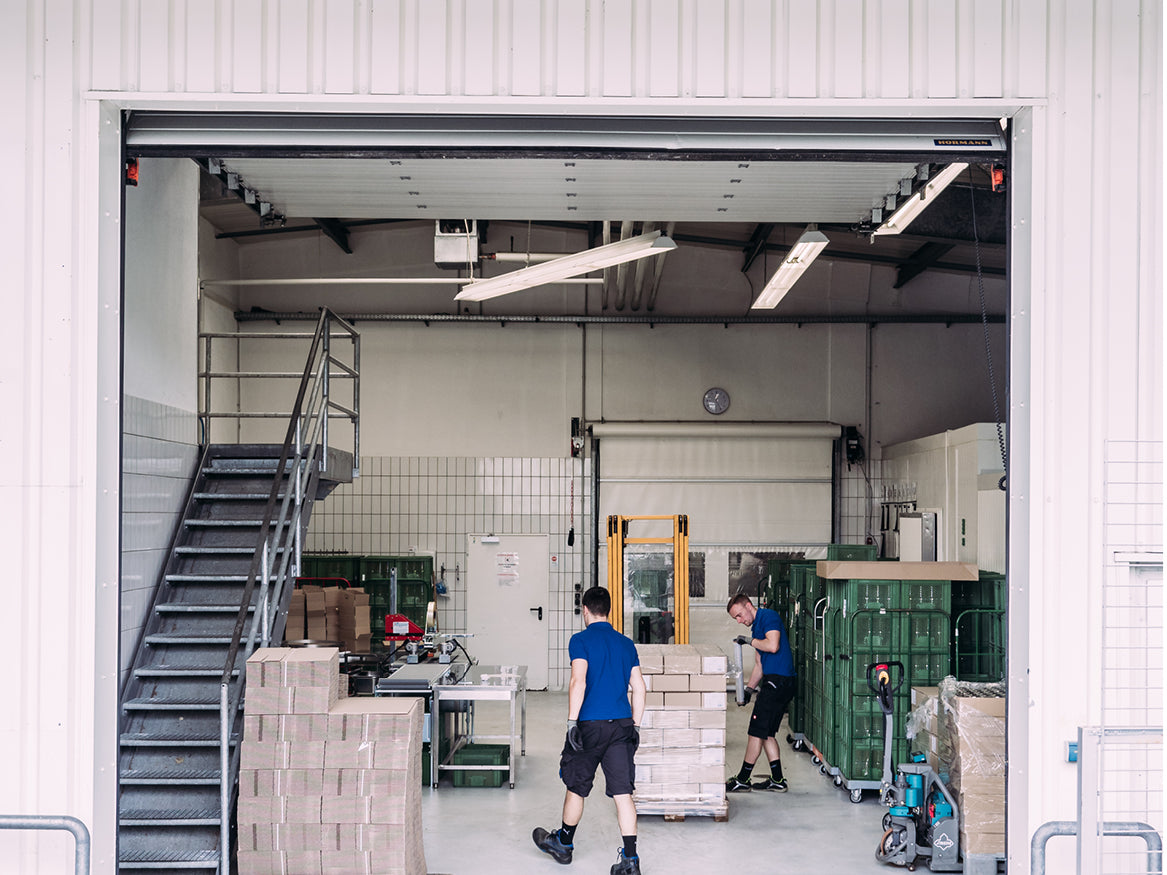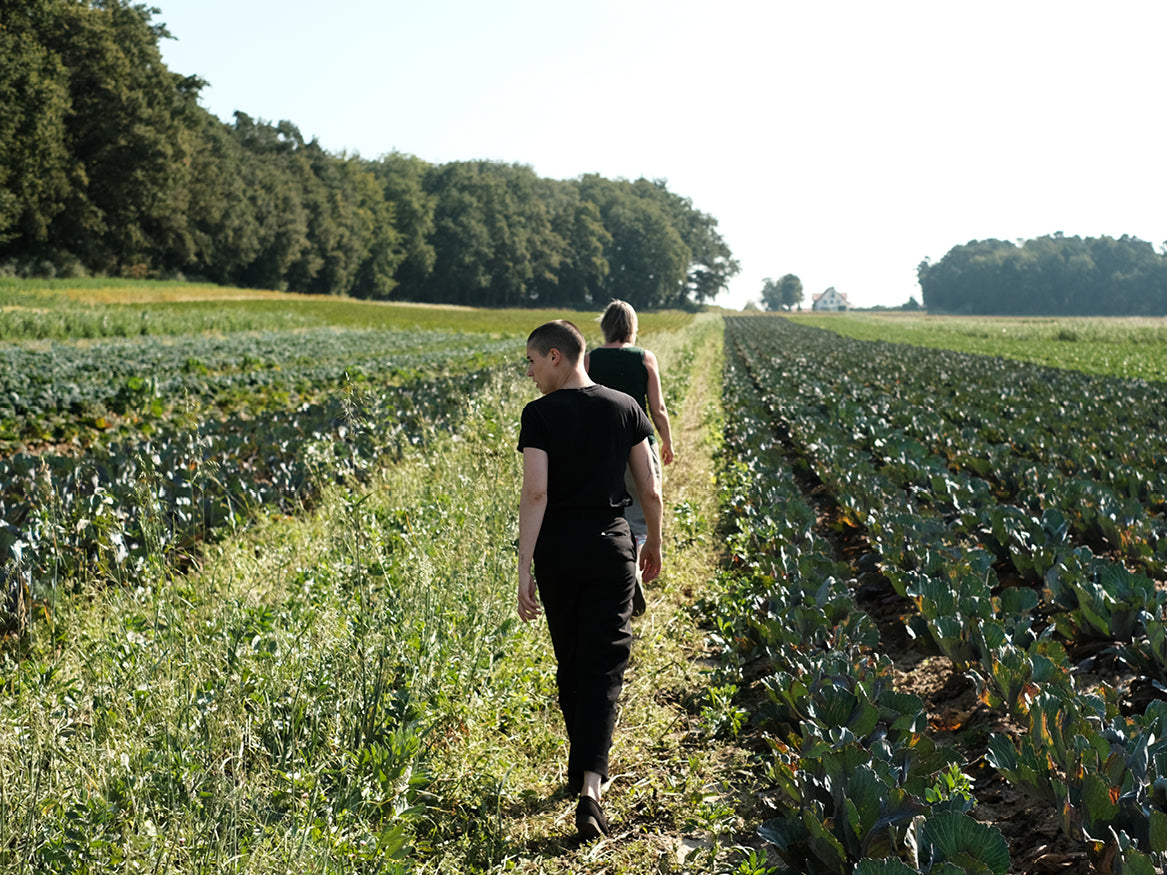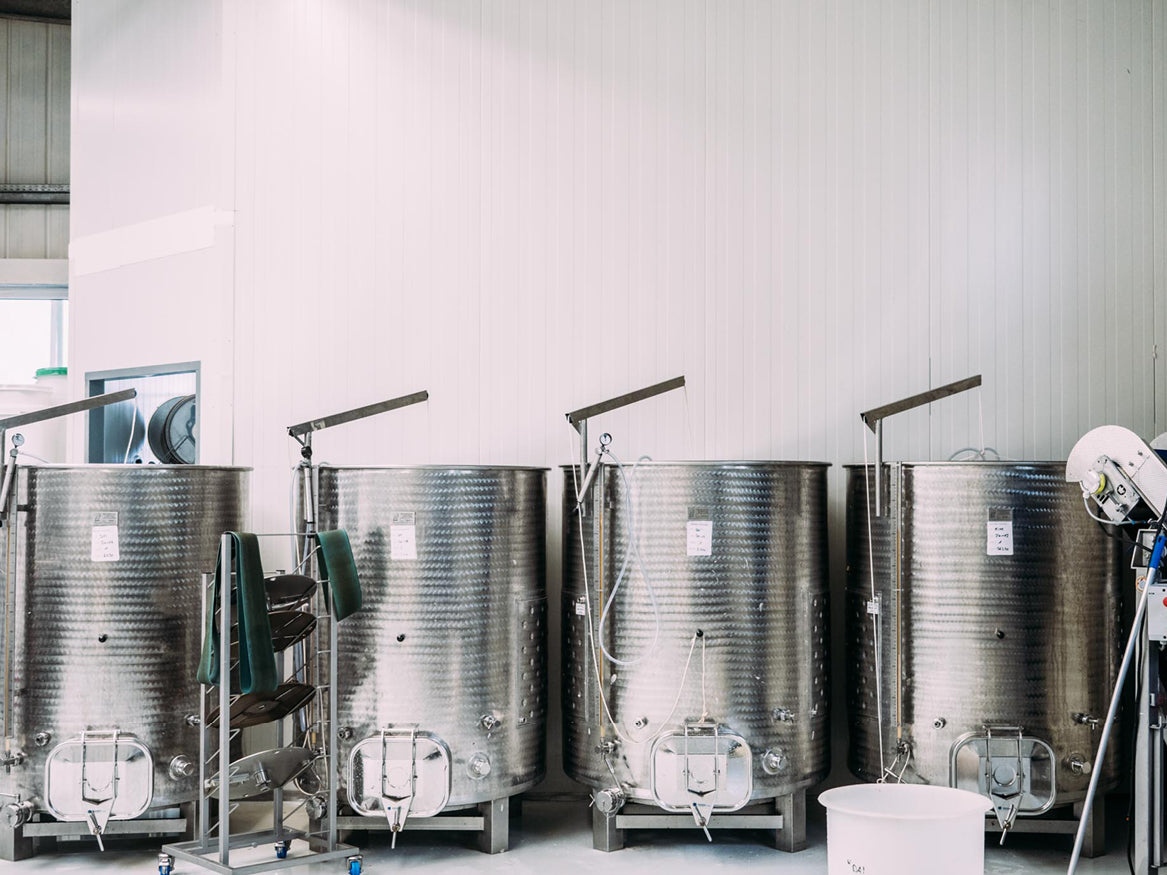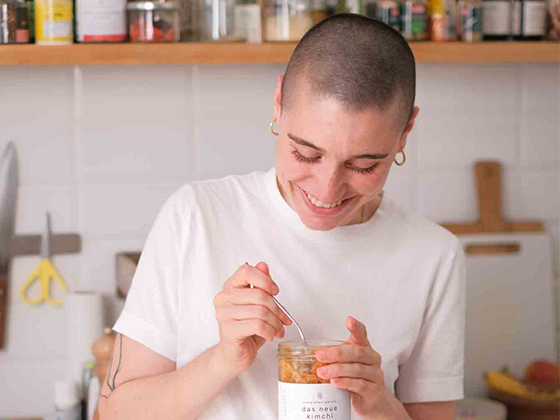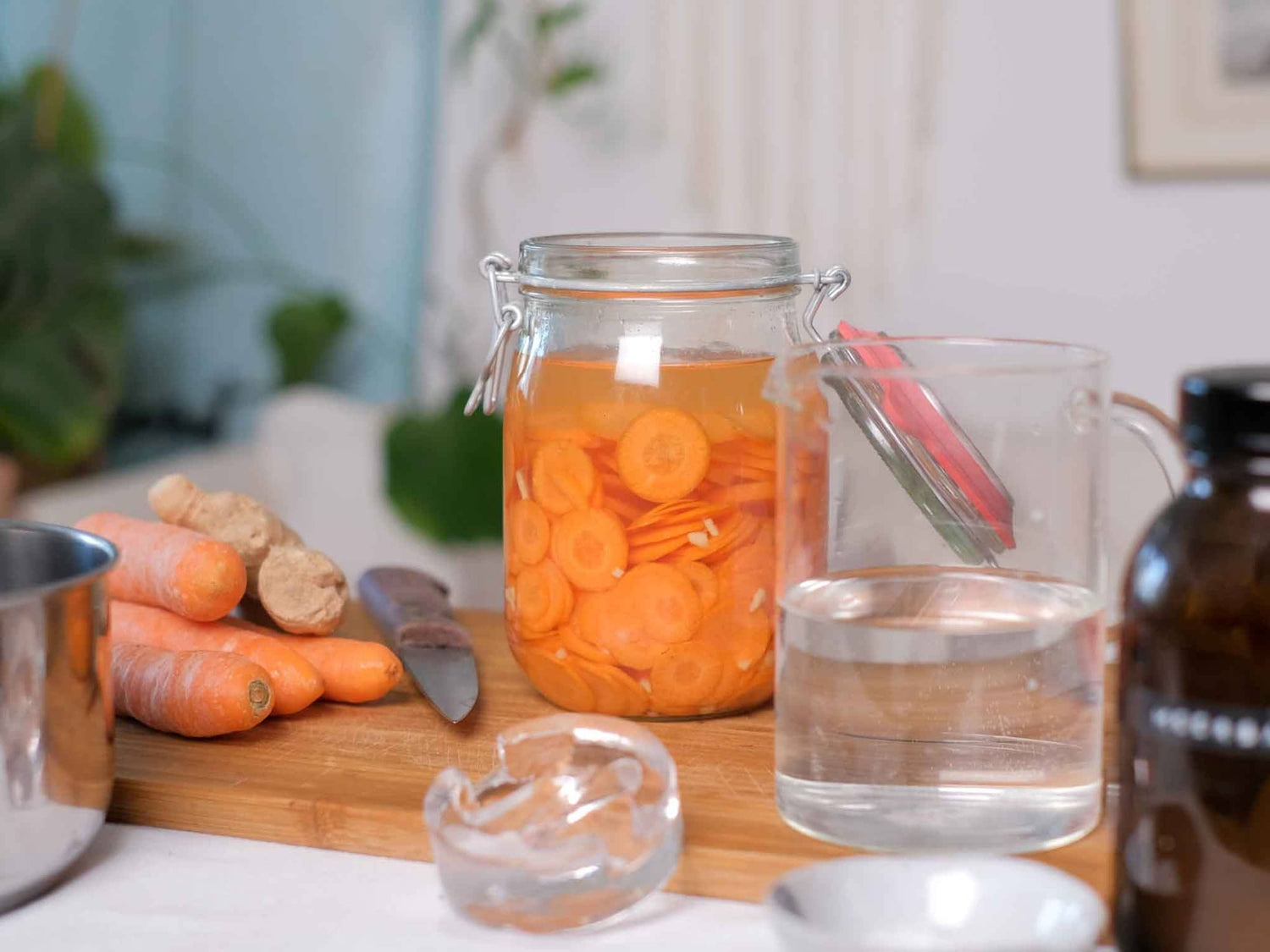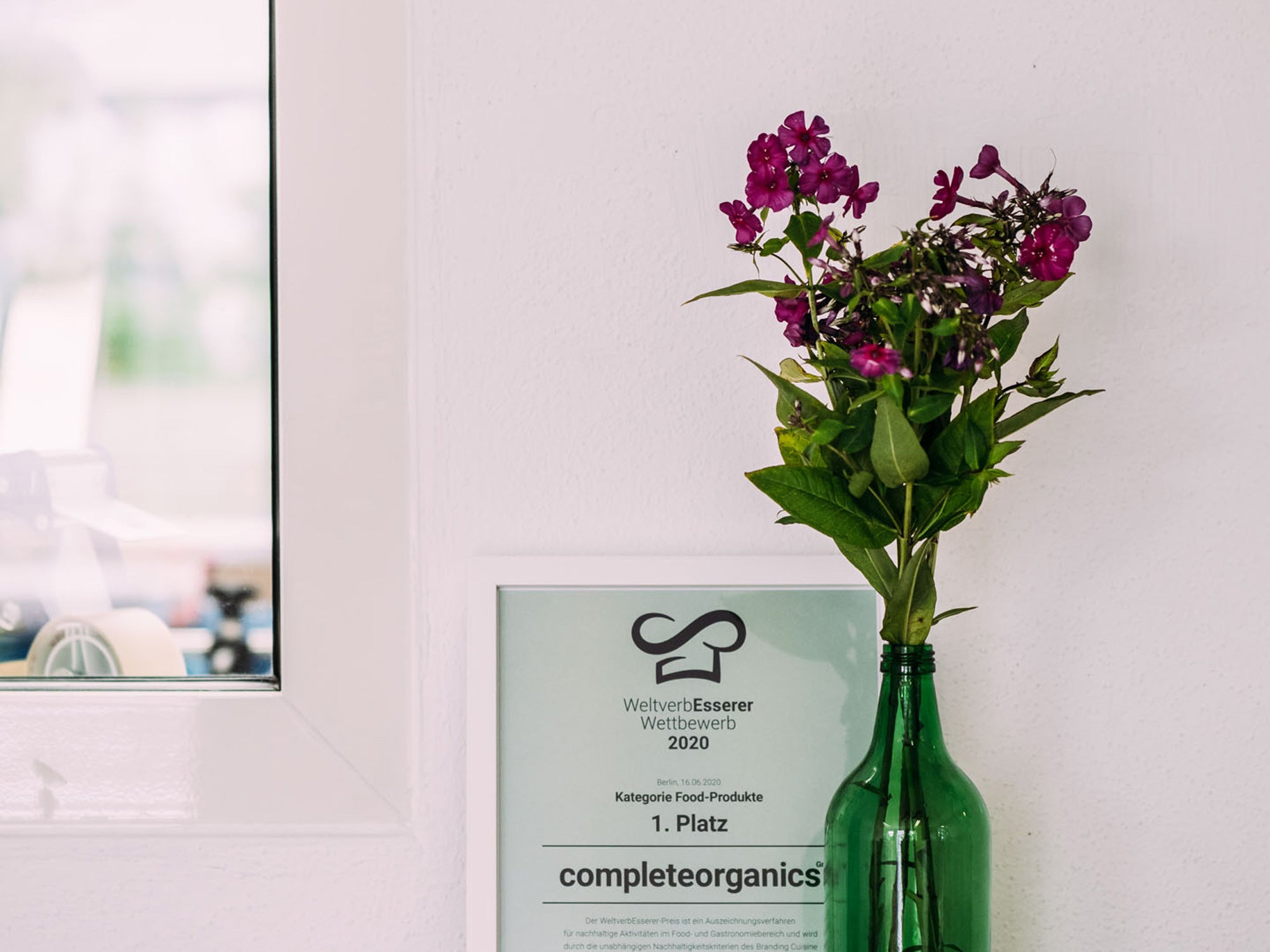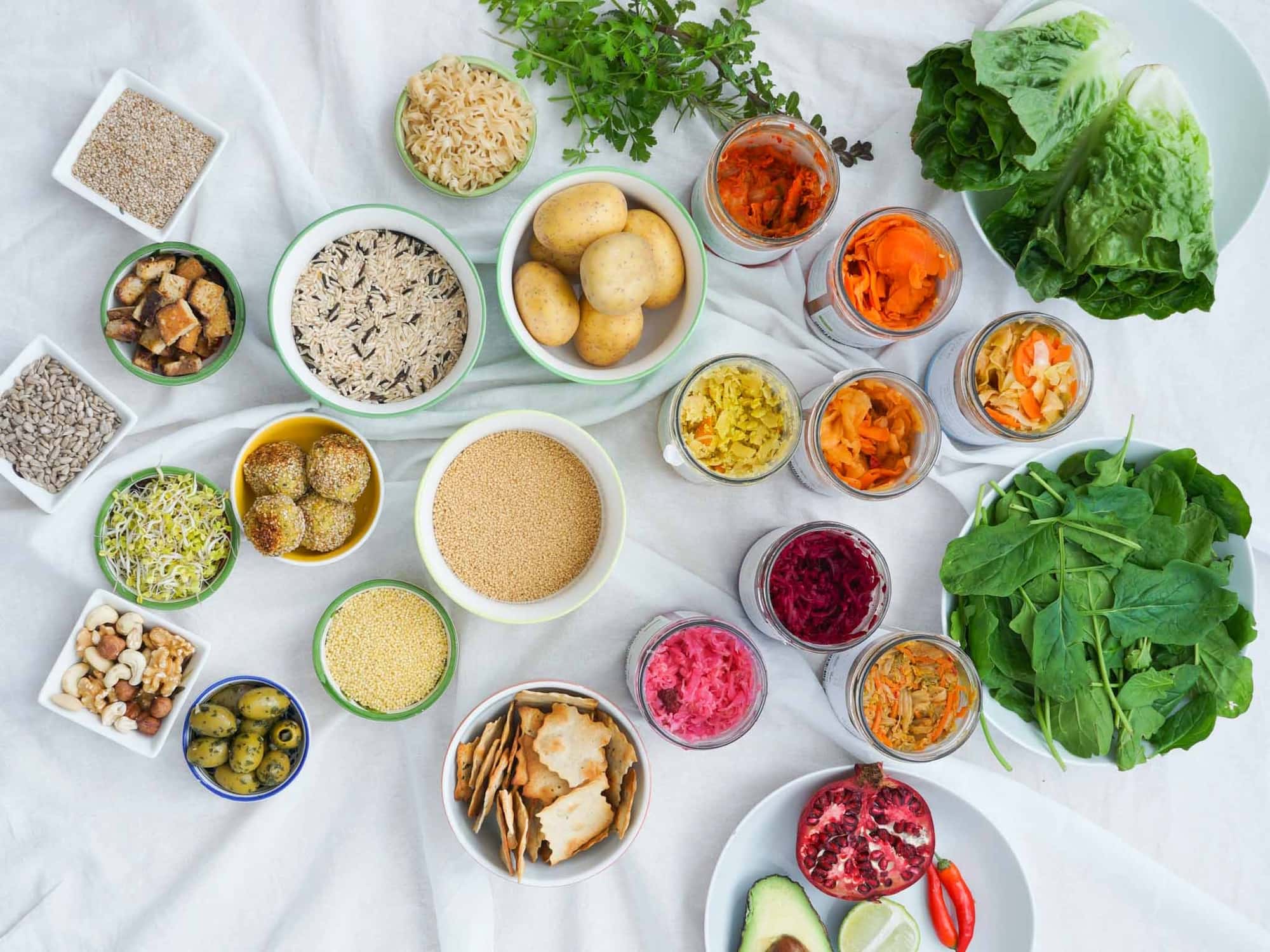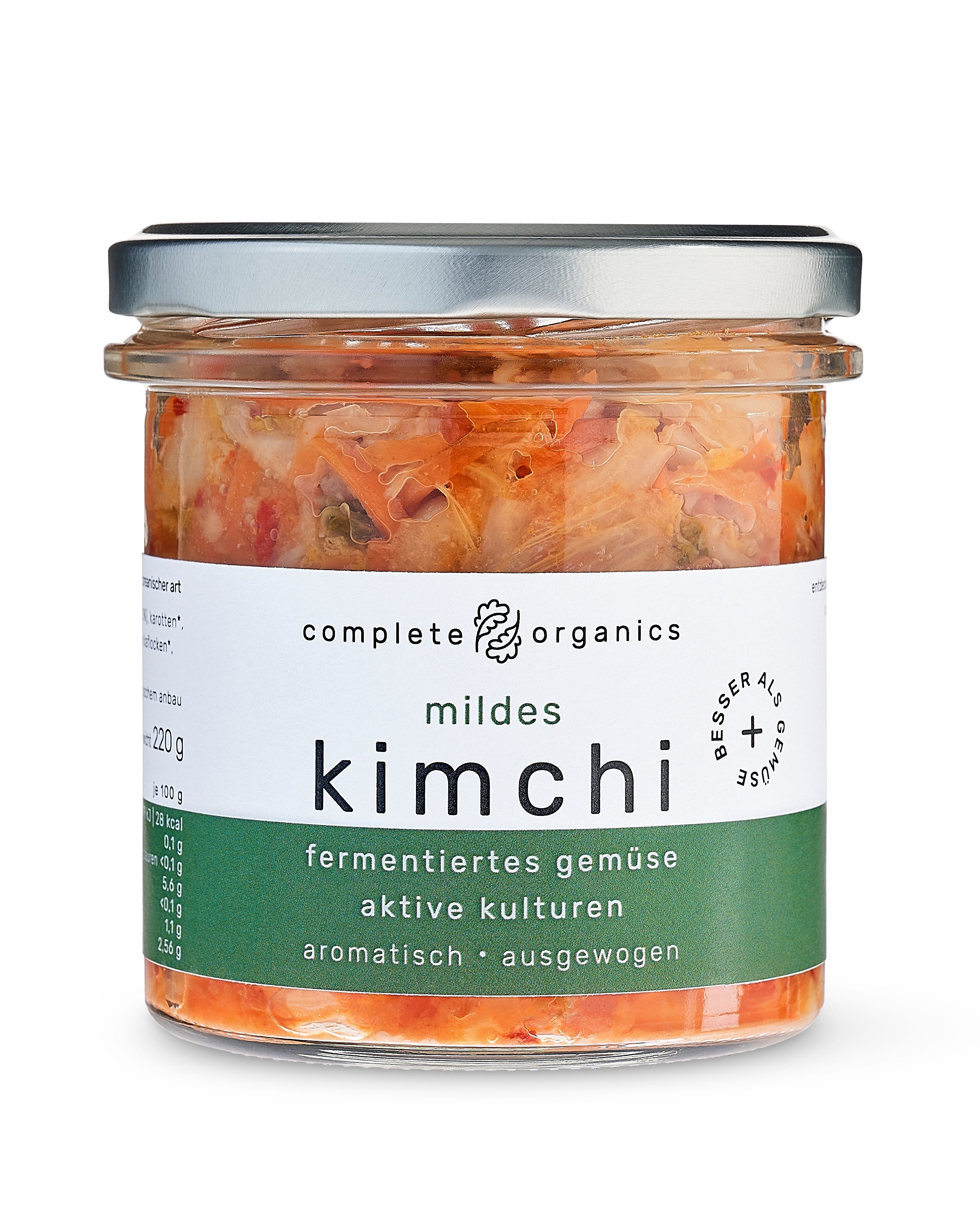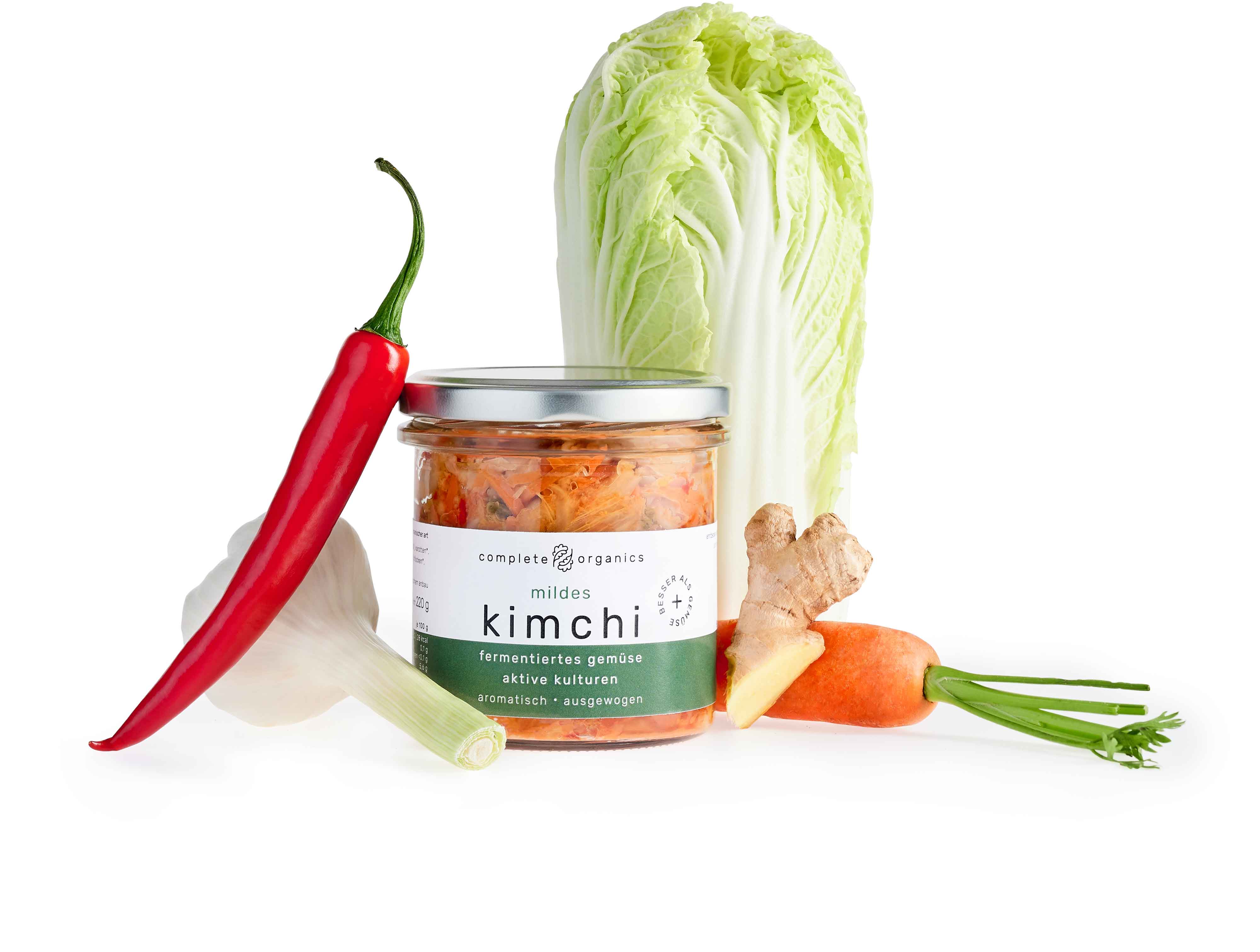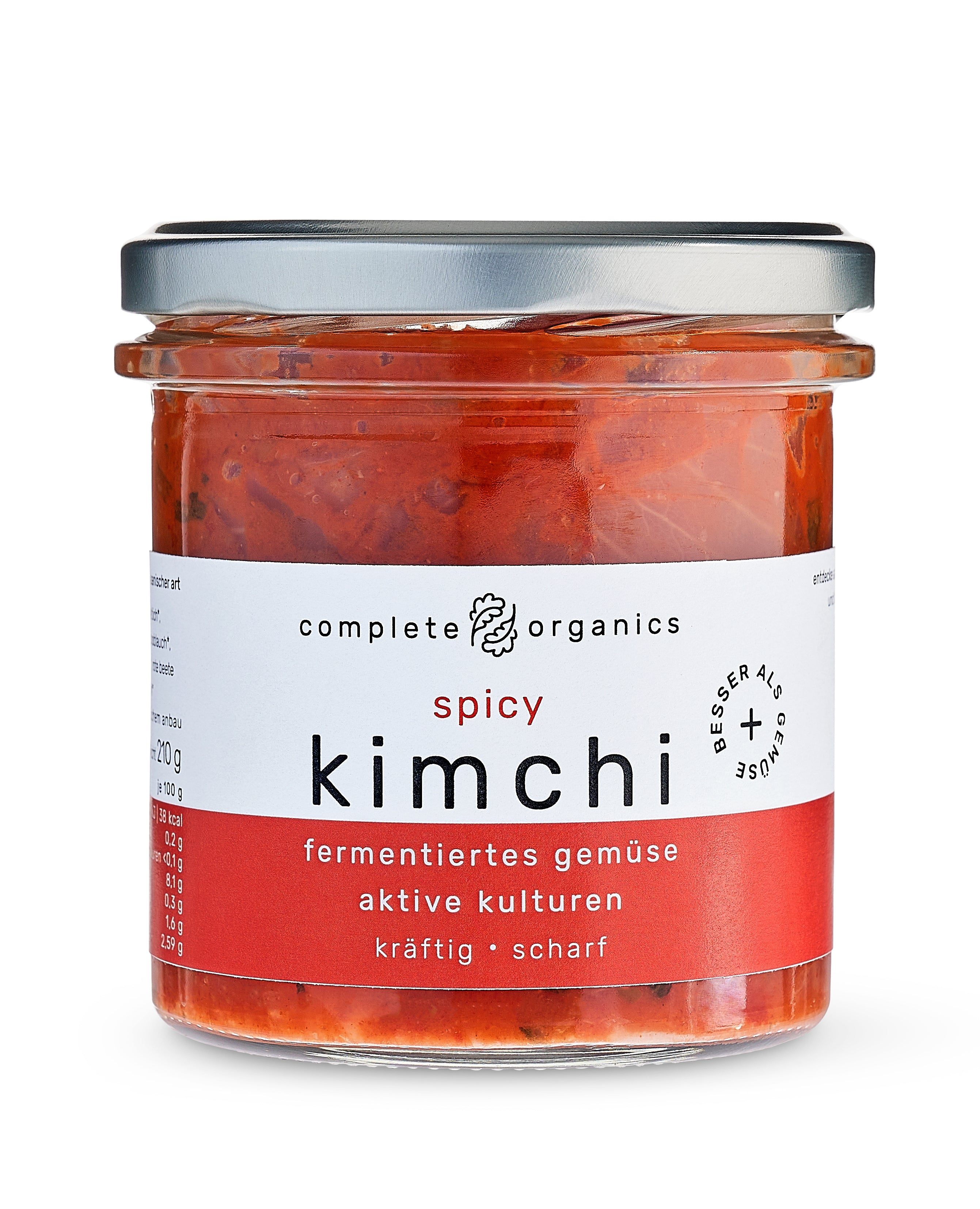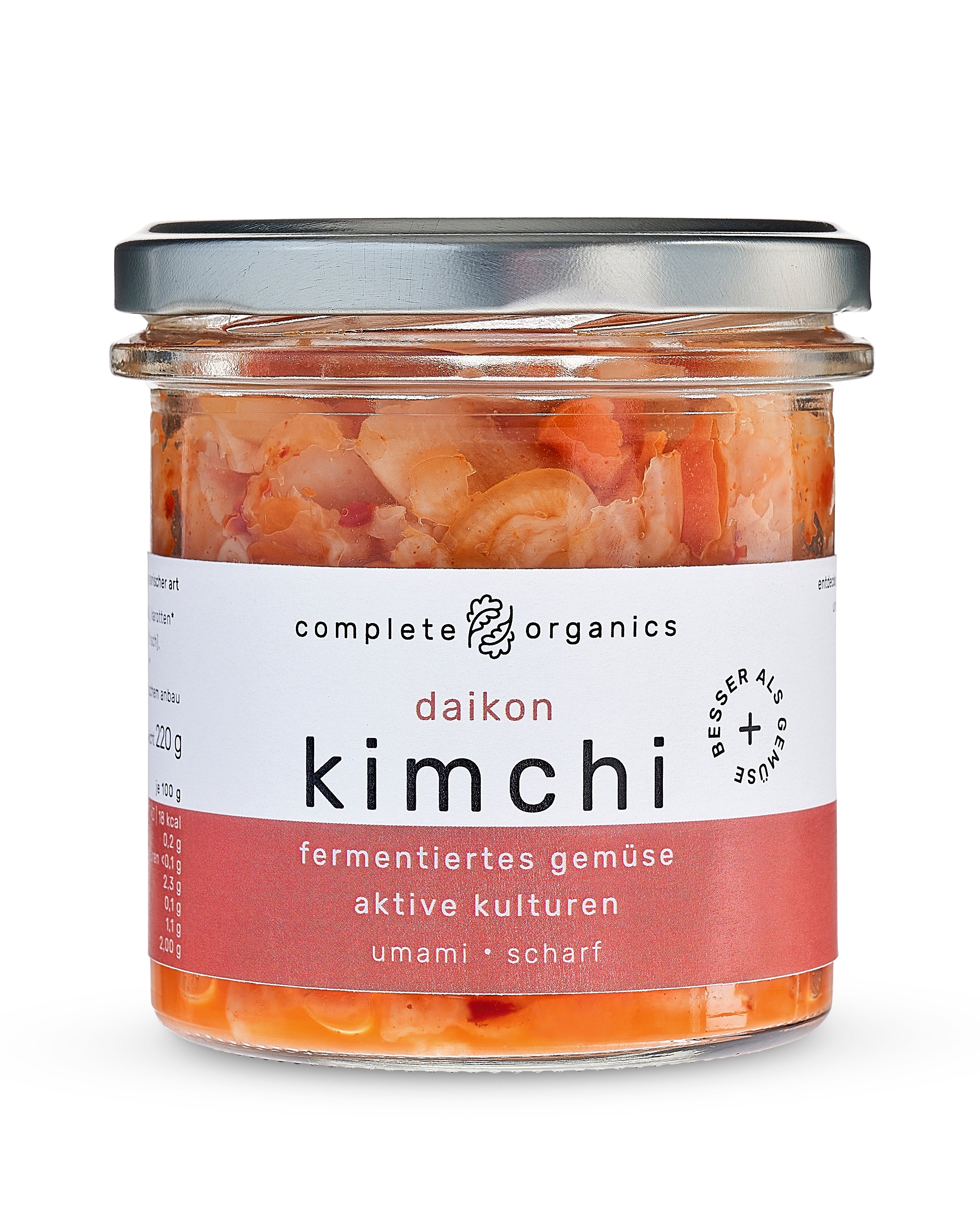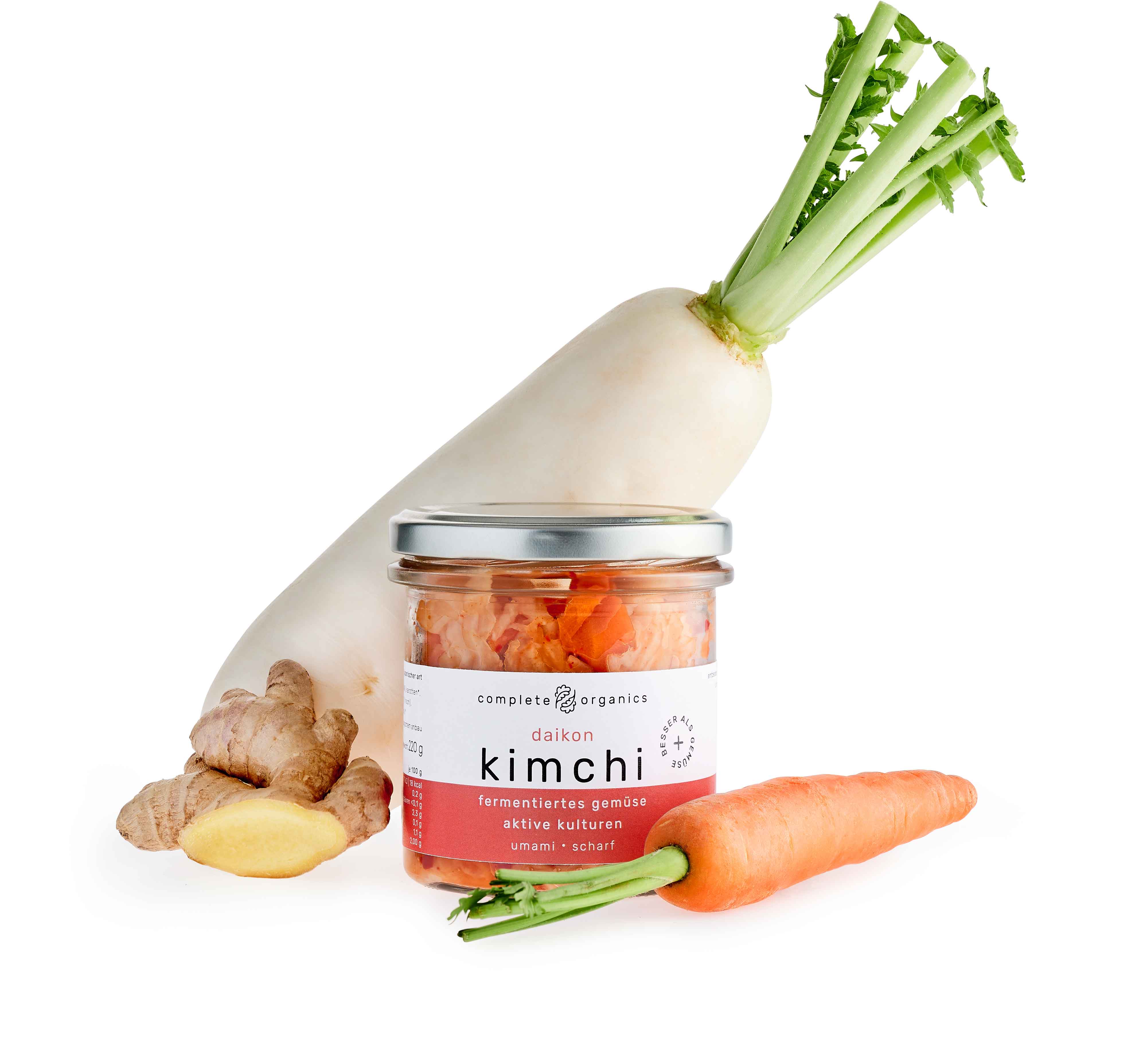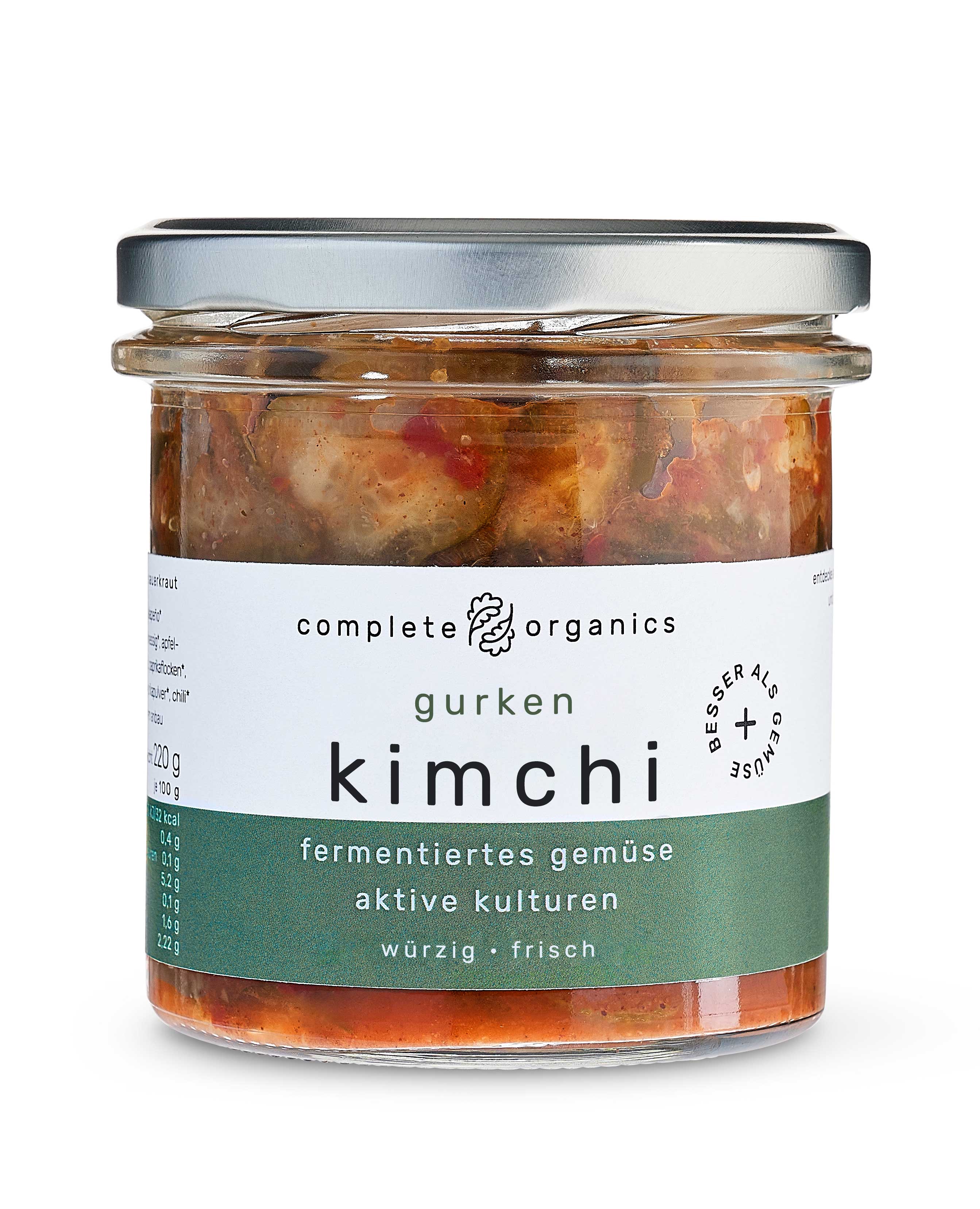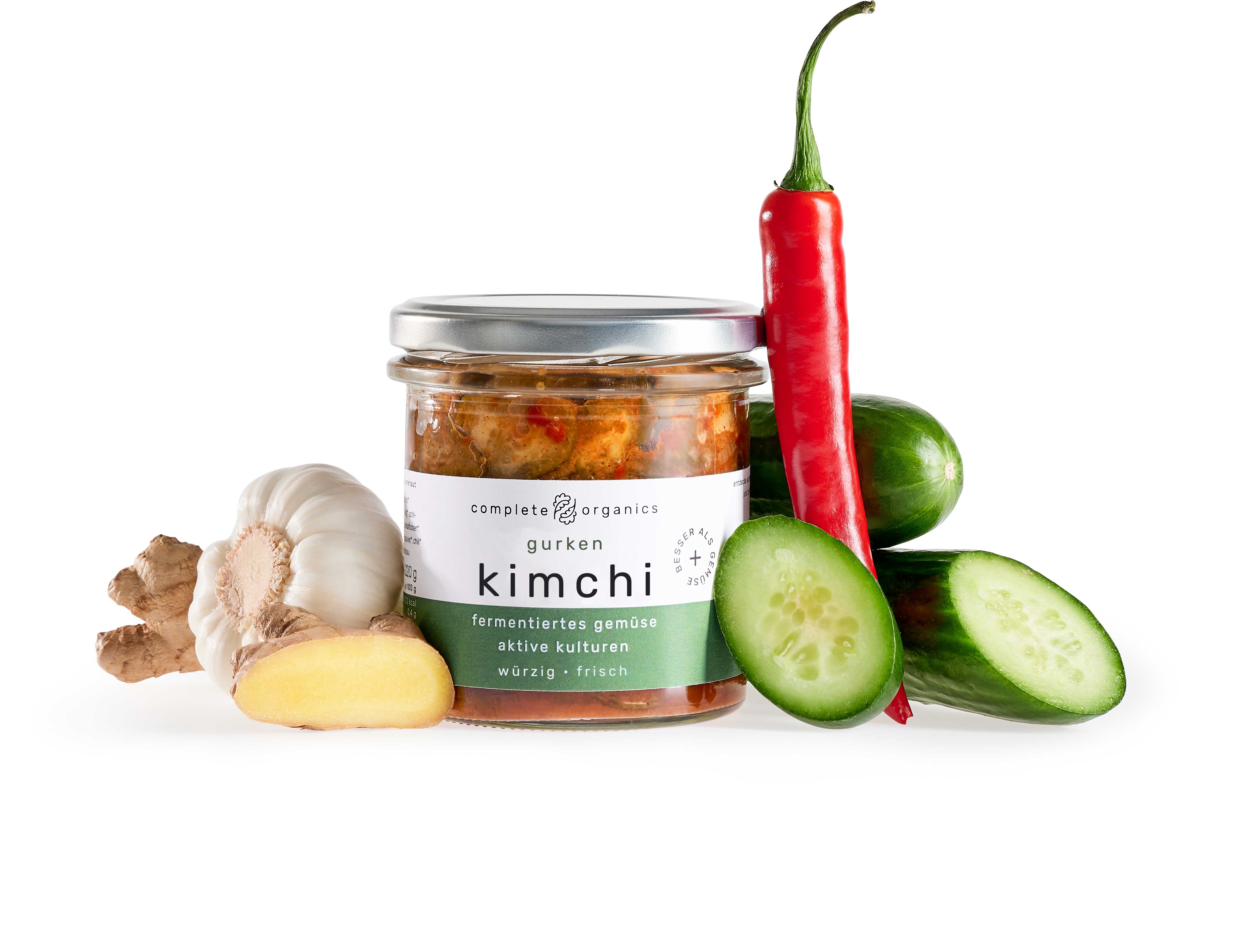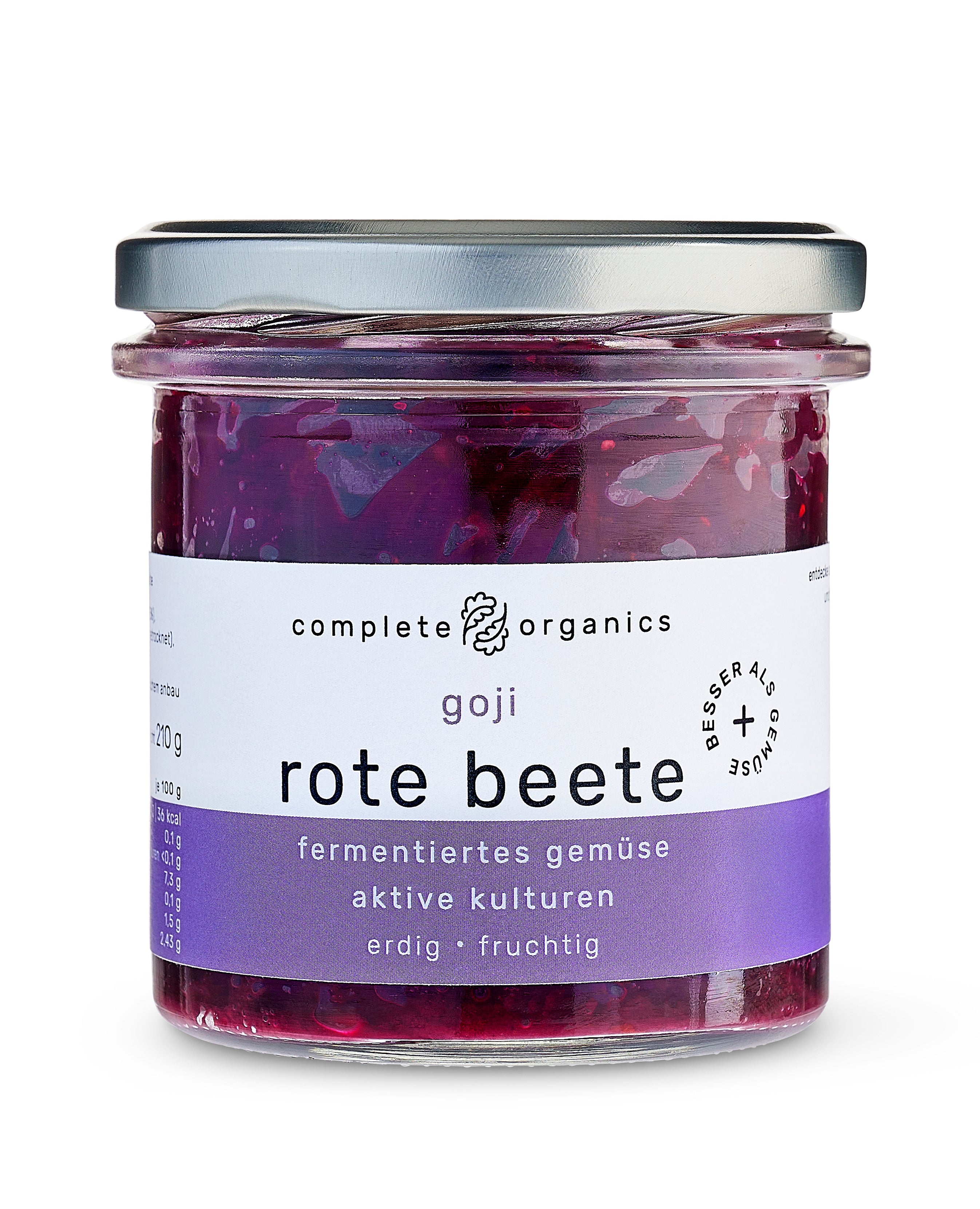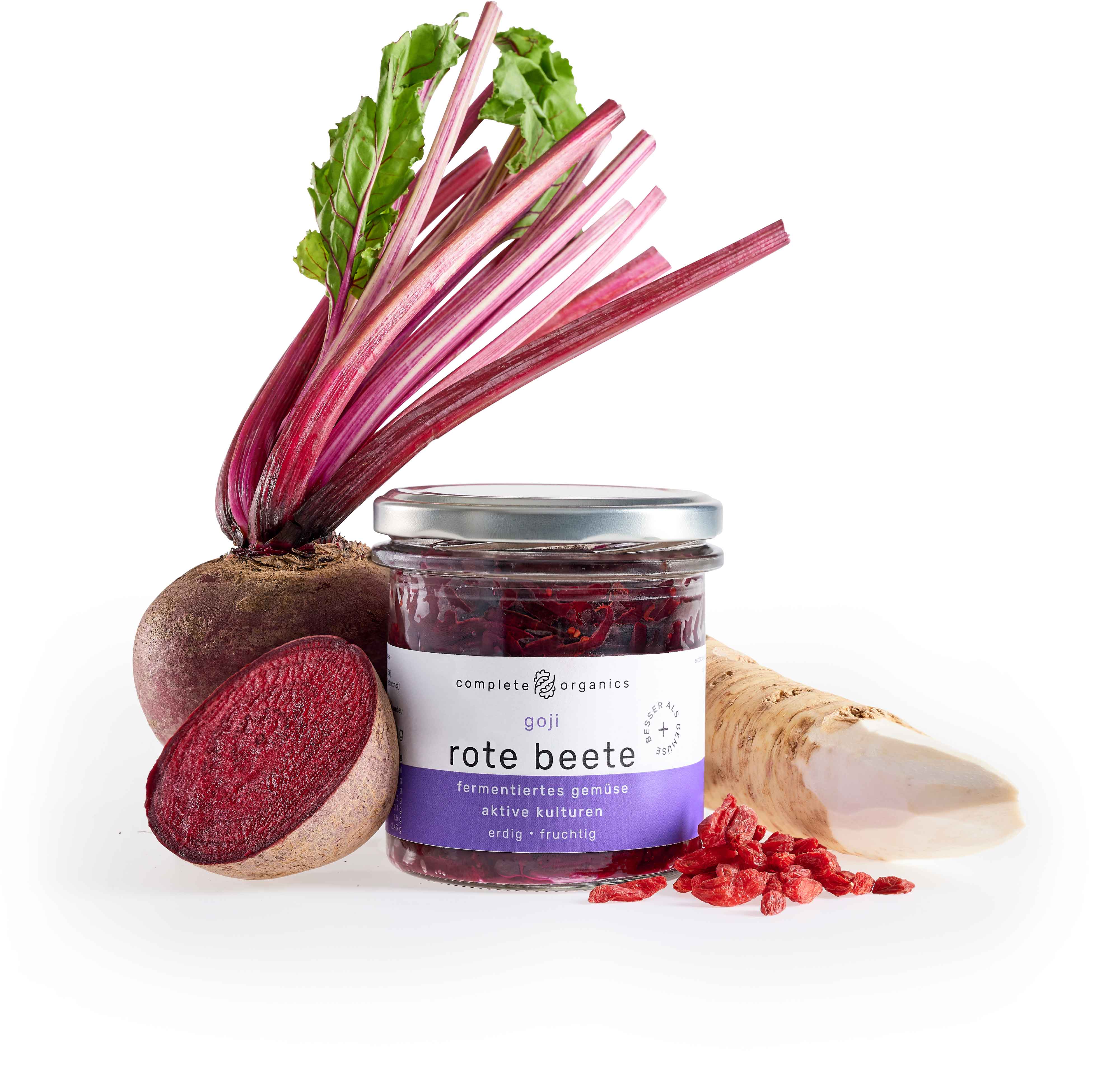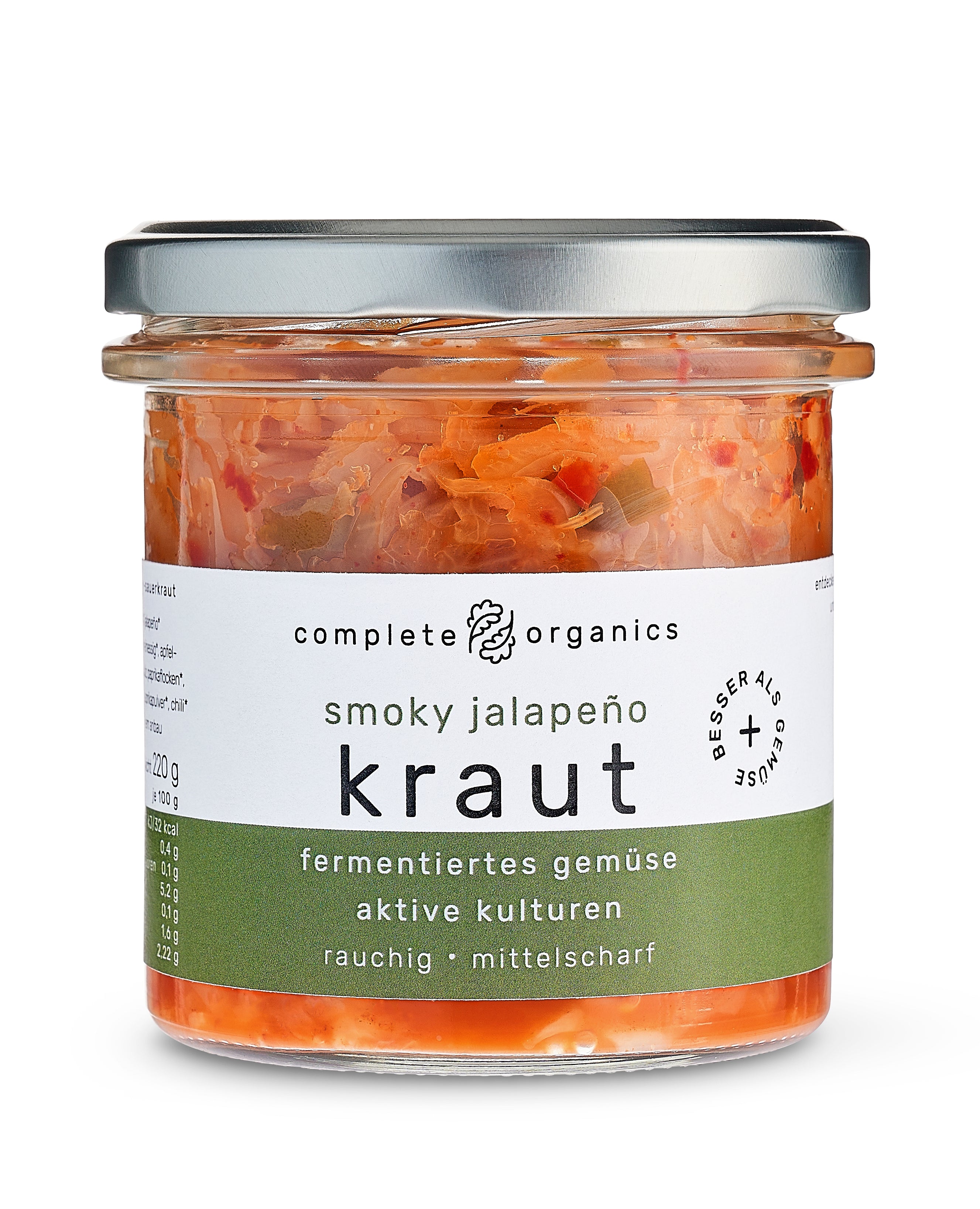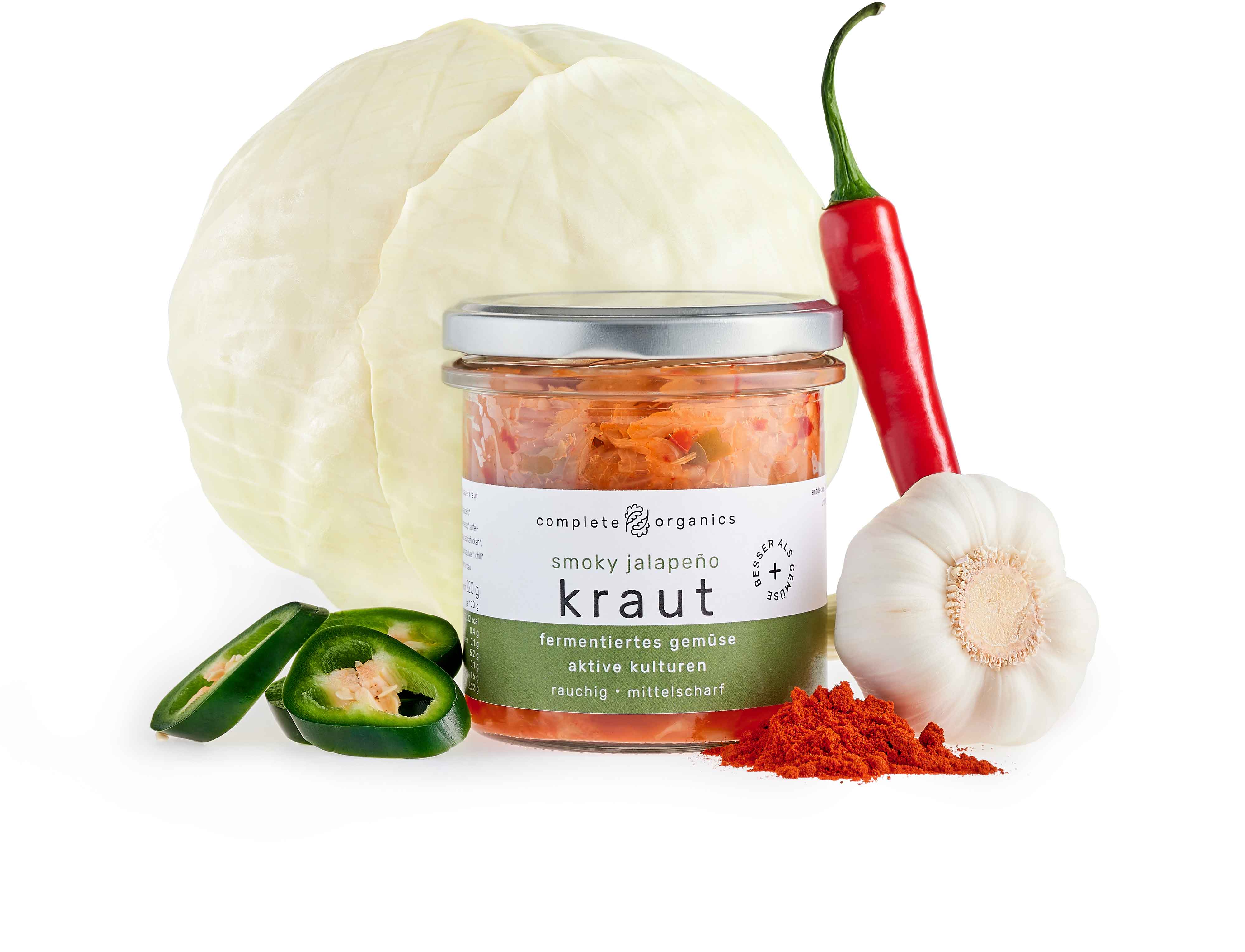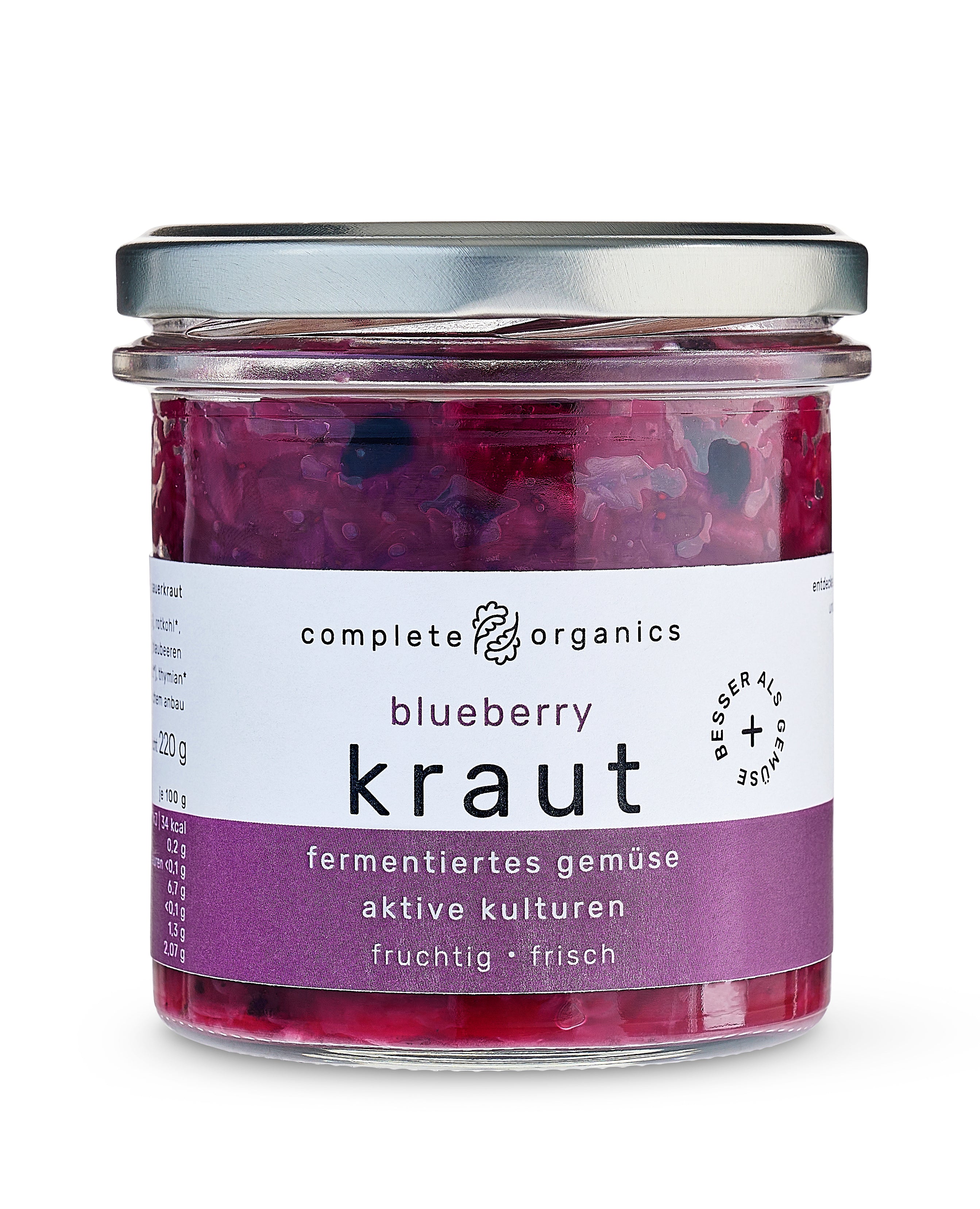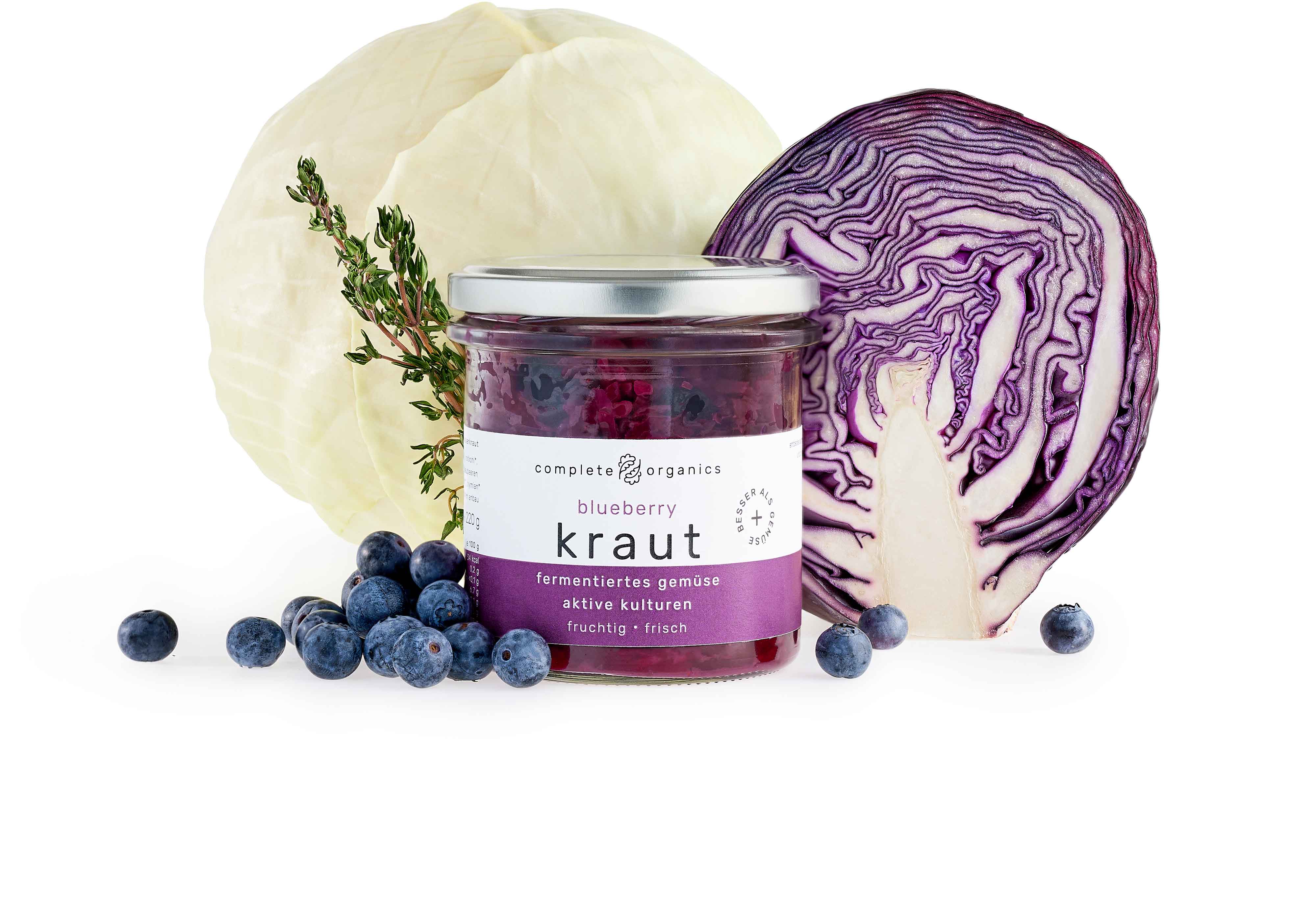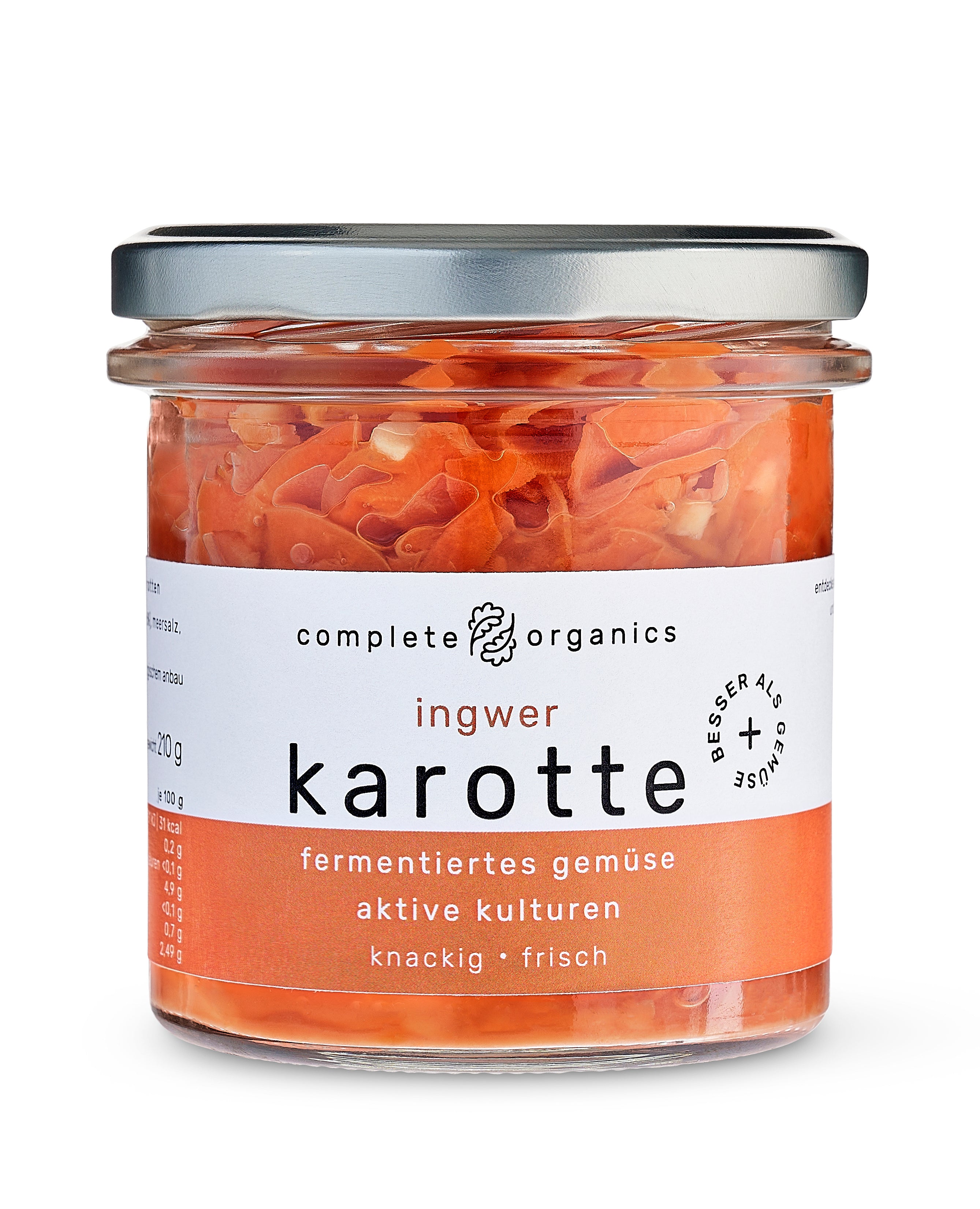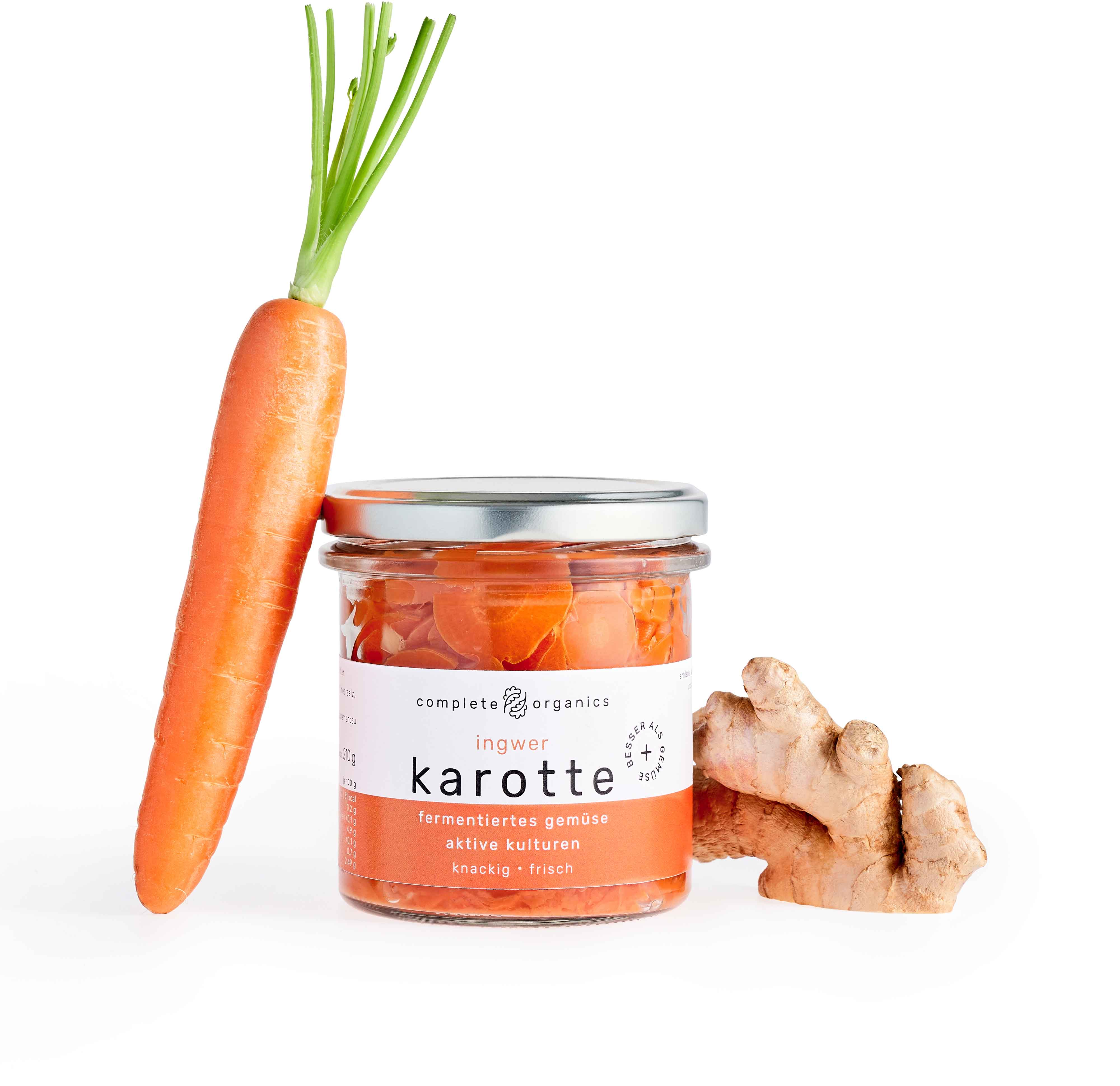Step by step to your first self-fermented vegetables
-
Carrots for every taste.
With ginger - minimalistic and exciting at the same time.
One of our classics.
-
You will need these utensils
-
- A canning jar of your choice
Here you can use different canning or jars, depending on your preference. We usually use a jar with a rubber ring, through which the fermentation gases can escape perfectly. However, you can also use a screw cap, which you should only screw on loosely so that the gases can escape. You can even do it without a lid and only with a nylon stocking put over it, which prevents insects from colonizing your batch. What you must not forget: Before you put the vegetables in, it's best to boil the jar to prevent mold from forming in the ferment afterwards.
- A weighting object
It is essential that all vegetables are under brine and thus separated from oxygen. To keep your vegetables under water, you need a weighting object that you put/press on top last. This can be a small saucer, a stone, a shot glass, an espresso cup, a bag of marbles, and more.
- A large bowl
A slightly larger bowl is ideal so that you can mix the vegetables with the salt and knead them a bit if necessary. Whether clay, plastic, stainless steel or wood - the material of the bowl does not matter.
- Cutting board and knife
- Scale

Ingredients & ratios to make your own
-
For your first homemade ferment, ginger carrots, all you need are the following ingredients:
- 500g carrots
- 10g ginger
- 10g salt
- Water (from the tap)
How to proceed
-
- We start by peeling the carrots and then cut them into fine slices - of course, you can also use other cutting methods, such as a pencil or dice cut, for the carrots.
- We recommend cutting the ginger into very small cubes, so that the rather intense/spicy tasting pieces don't get too big and add a subtle note to the ferment.
- Add the salt and knead or mix everything properly. We use only unrefined and untreated sea salt for all our ferments - we would recommend this to you as well.
- Press the finished mixture firmly into the jar and add water until everything is sufficiently covered with liquid.
- Then all that's left is to put the weighted object on top to seal the brine airtight! We use a glass filled with a little water, which fits exactly in diameter, you will certainly find something suitable (see above)!
- And now you have to wait patiently. It is best to leave the vegetables in the jar for about 10 days at room temperature, covered with a kitchen towel, with as little light as possible. If you want to be on the safe side, place the jar on a saucer, because during fermentation it is quite possible that the brine will squeeze out of the jar and overflow - especially with delicate materials, this could leave ugly marks.
But watch out!
-
Have you waited patiently for the 10 days, then you can get your ferment out of the darkroom. Whether your ferment has become something, you will notice relatively easy. Visually, no mold should have formed and the smell should not deviate from the pleasant sour aroma of fermented vegetables. Basically, you should rely on your senses - sight, smell and taste - when evaluating your ferment!
If you already know our Ginger Carrot, then you know how the ferment normally smells, looks and tastes. If the smell of your ferment seems (really) unpleasant, then it could well be that something went wrong and the fermentation did not work properly. Then, unfortunately, your ferment is really spoiled unintentionally and would have to be disposed of. If this happens to you once, please don't let it get you down - it also happened to us from time to time in the beginning ;)
If you are unsure, you can of course contact us at any time!
If everything seems okay, move the jar into the fridge, so that you have something from your ferment as long as possible! From now on you can help yourself to it at any time, the only important thing is that you always use a fresh fork to avoid getting bacteria into the jar! If you take care of all this, your ginger carrot will keep for several months in the fridge. Even if we are sure that you will eat it much faster!
Applications and recipe ideas for the ready ferment
-
The ginger carrots go great as a side dish, whether with potatoes, with tofu or also with many non-vegetarian dishes as well as for composing salad creations. For inspiration, check out ourrecipe blog at .
And if you want to try out fermenting even more, you can alsocheck out our detailedlive workshop at , where we also answered some questions about fermenting.

